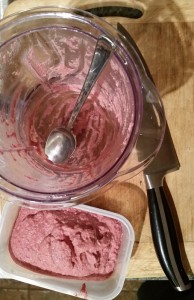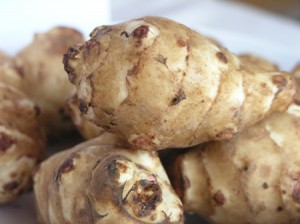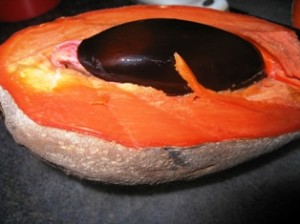Being a junkie for greens runs in my family, and my mother’s new garden plot has been churning out prodigious quantities this year – lacinato kale and rainbow chard, particularly. However, one thing that she does that drives me bonkers is that she trims and only eats the leafy bits – she wastes those lovely crunchy stems (ditto with beets, radishes and carrots – she never uses the greens)!! I’ve taken tons home from family dinners to use myself. I usually crisp-fry them or just add to other greens I’m making, but recently stumbled across this fantastic idea over on the Food52 blog – chard stem hummus! Helping my mom cook the other night I couldn’t help but secretly smile as I berated her for again ‘wasting’ the lovely chard stems and beet greens (we made a raw chard salad with fresh lemon and crispy onions, roasted beets, and prosciutto-wrapped halibut). I was taking all those lovelies home, and I had plans for them.
Being me, of course, I couldn’t possibly follow the recipe exactly. I used:
- 100 grams chopped chard stems
- 100 grams chopped beet stems
- 2oz (1/4 cup) tahini
- 2oz (1/4 cup) olive oil
- 2 tbs. fresh lime juice
- 4 cloves garlic
First, I washed and chopped the stems, and threw them in a pot of about 4 cups boiling water, to which I also added a tablespoon of salt and half cup vinegar (doing this adds a bit of flavor and improves the texture of the greens for blending). While boiling, I smashed and peeled the garlic, and measured everything else into my blender. After 15 minutes, my stems were soft, and I strained them into the blender, adding about a tablespoon of the liquid to pull in more flavor. I blended it until not-exactly-smooth to yield the comedically pink condiment you see at right.
How’s it taste, you ask? It’s good. Really good. Can-I-fit-my-whole-head-in-the-blender-to-lick-it-clean? good. And that’s just the ‘base’ version – I’ve played with is a bit, adding sumac, cayenne, cumin, and in one attempt flax seeds, all of which can dramatically change the flavor to fit whatever dish you’re pairing with the hummus.
Enjoy!
– MAW




